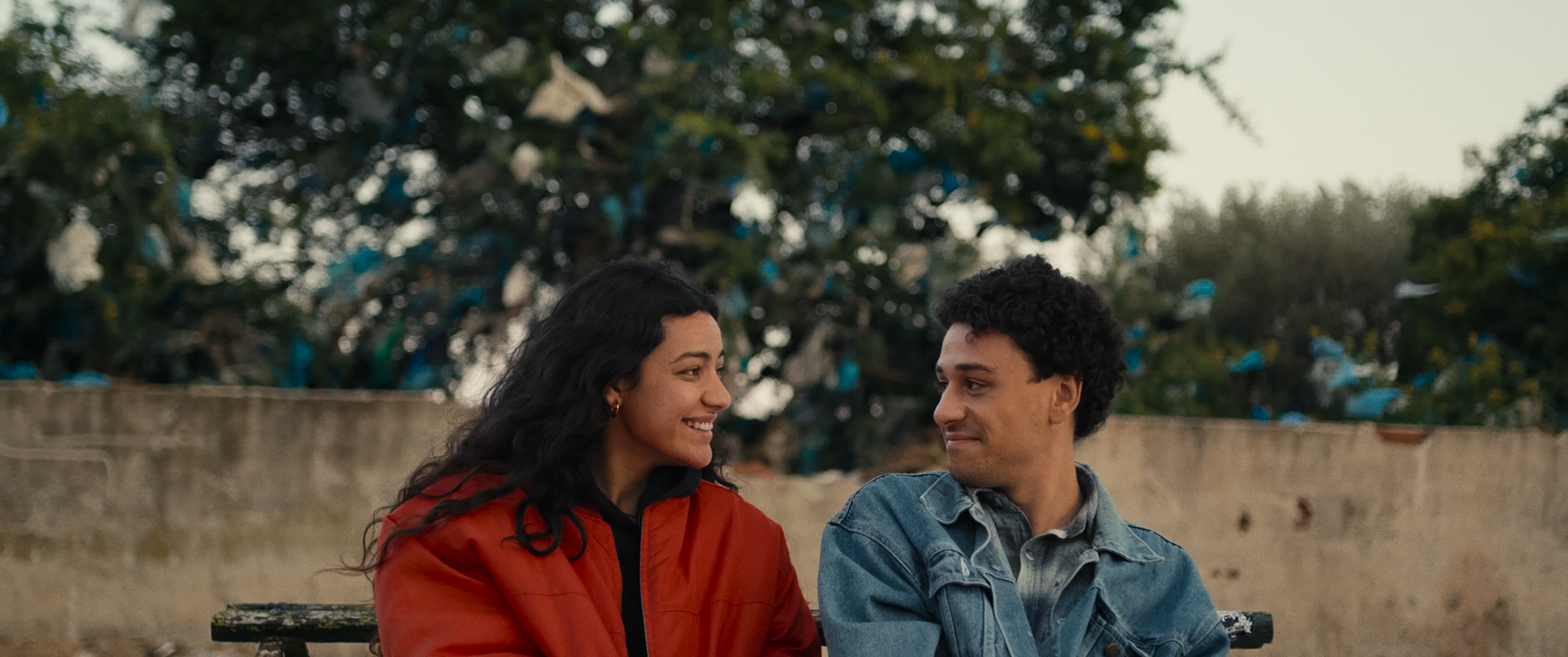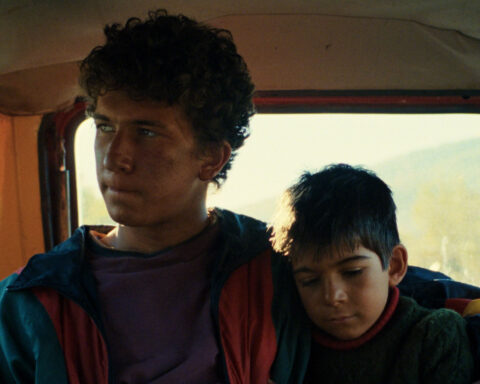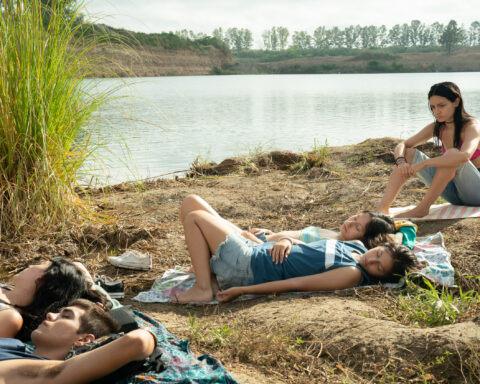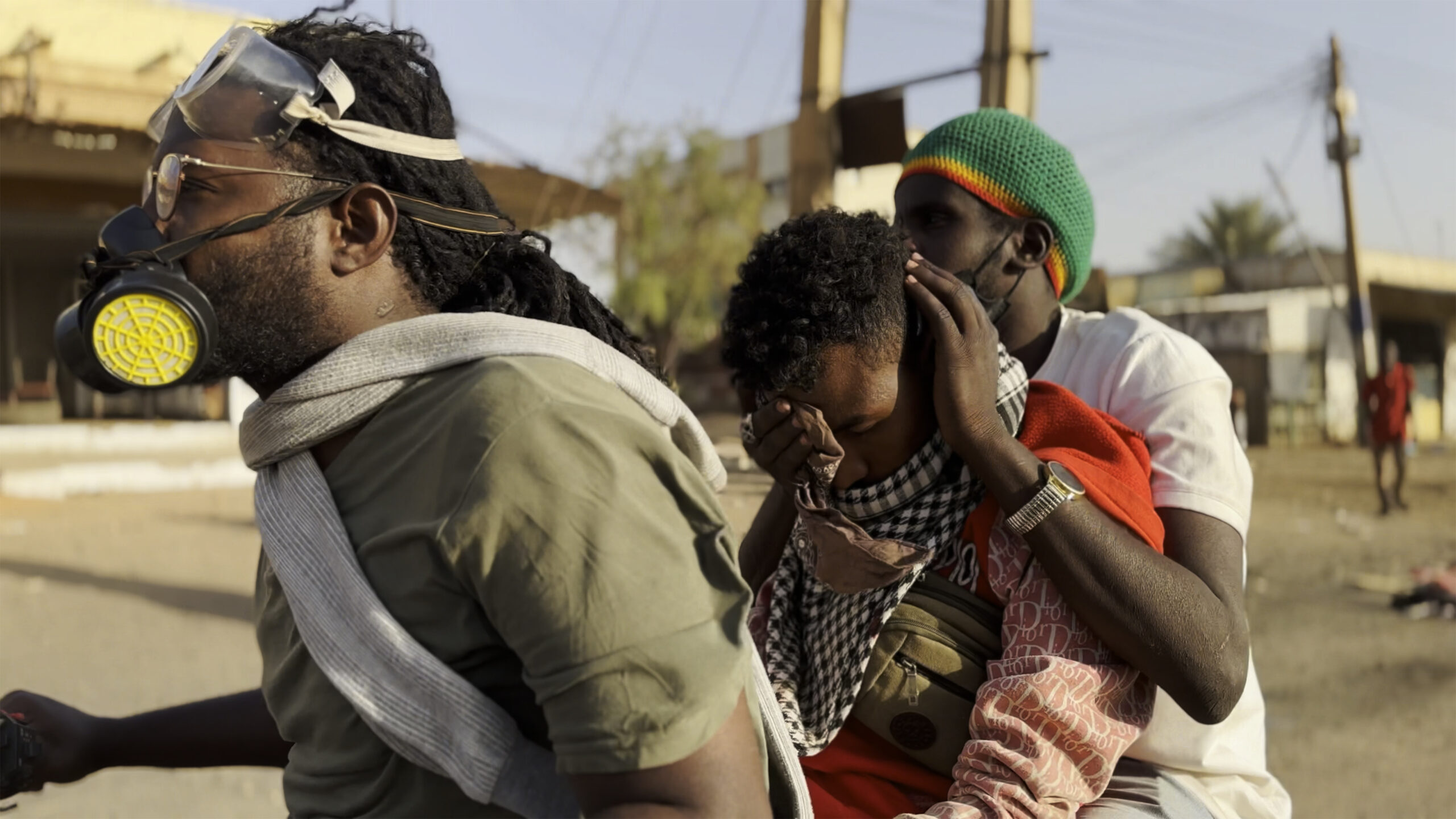A sense of uncertainty and a lack of clear purpose define the meandering paths of youth. The dicey periods of youthful vigour are a blur of restless energy, a constant push forward into an unknown future. A fundamental question—Where are we headed, and what will we do when we arrive?—marks this period. It’s a precarious time of maneuvering the tension between our desires and our readiness to fulfil them. Tunisian director Amel Guellaty‘s debut feature film Where the Wind Comes From grapples with these very themes, capturing the essence of this youthful journey—the delicate dance between aspiration and ability. As two young adults circumvent the complexities of self-discovery, the film focuses on them, caught between the pull of tradition and the yearning for something more, adrift in the currents of their youthful zeal in the outskirts of Tunisia.
At the heart of Where the Wind Comes From are two ambitious young people: Alyssa, a headstrong 19-year-old girl, and her quiet 23-year-old friend, Mehdi. Still in college, Alyssa is weary of the constant caregiving required by her ailing mother and younger sister. She yearns to escape her hometown and build a better future for herself. Mehdi, a computer science graduate seeking employment, is a gifted artist who creates surreal images using charcoal and acrylics. He and Alyssa, friends for years, share a platonic bond. Both dreamers, aspire to achieve something significant that would pull them out of their current reality, a stark contrast to their vibrant dreams. Alyssa learns of an art competition in Djerba that could be their chance. She convinces Mehdi to participate in the contest, and as they travel together in a stolen car, their journey becomes a transformative experience, reshaping their perspectives and their understanding of themselves and the realities of their lives.
Where the Wind Comes From does not strictly adhere to or entirely discard traditional plot or three-act structure; it simply observes Alyssa and Mehdi’s experiences with each other and the difficulties they face. The various situations that both of them encounter are clashing, self-revelatory, and full of fun and adventure. Unlike many road movies that rely on caricature, this film offers nuanced portrayals of its small-town characters, consistently defying expectations. As Alyssa and Mehdi travel, their unplanned stop at Uthina, an ancient Roman settlement with amphitheaters, surprises us. Mehdi’s desire to share the site with Alyssa, who has never been, prompts this detour. Similarly, a stop at the beach allows them to reveal their desires and innermost thoughts to each other, thoughts they haven’t shared until then. These moments reflect the director’s subtle approach to revealing the characters’ inner lives and their evolving dynamic. They also highlight the meandering nature of their journey, emphasizing that the destination is not always the point. This beautifully sums up the delicate beauty of the film and its depiction of the beauty of the unexpected. The unplanned stops, the quiet moments of connection, and the shared experiences contribute to the film’s realism and offer insight into the characters’ evolving relationships and individual aspirations. The film effectively uses these seemingly small moments to illustrate the characters’ inner lives, their dreams, and the challenges they face as they confront the uncertainties of their future.
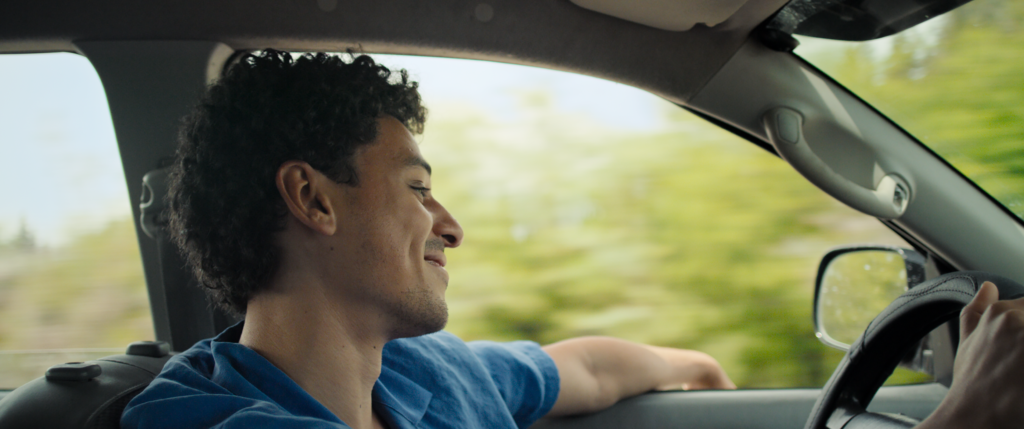
The differences between the personalities of Alyssa and Mehdi bring a nuanced perspective to the film’s portrayal of friendship, ambition, self-discovery, conflict, and connection. Alyssa is quick, energetic, and relies on tricks to get things done, whether it’s stealing truck keys or imported cookies. She’s the reason Mehdi participates in the competition; he’s otherwise too shy and self-doubting to even consider it. If Mehdi is pragmatic, Alyssa is spontaneous, impulsive, and a risk-taker. She often escapes into a dreamlike imagination, where animated tendrils encircle her arm, a young teacher breaks into dance, she levitates in flight, or colorful Pavonini appears at her window sill in moments of distress. So, both characters, by embracing their contrasting natures, demonstrate the beauty of individuality and the power of human connection.
Guellaty and her cinematographer Frida Marzouk create a visual aesthetic that keeps us with our characters instead of visually wandering the landscape. It creates privacy, a sense that we’re in the vehicle with Alyssa and Mehdi, joining them on this journey, and fostering an intimate connection with their experiences. Guellaty, who also edited the film, brings a keen sense of rhythm and pacing, skillfully weaving together the characters’ inner lives with the external landscape, allowing us to connect with their hopes, fears, and dreams.
Eya Bellagha as Alyssa and Slim Baccar as Mehdi never feel like they’re performing; they inhabit their roles, living in each moment. Their on-screen chemistry carries the film with tremendous grace, never hitting a false emotional note. They capture the essence of lost souls who learn life’s lessons the hard way.
At its heart, Where the Wind Comes From is a celebration of freedom—the freedom of the open road, the freedom of connection with loved ones, and the freedom of uninhibited existence. Amel Guellaty offers us a glimpse of this unfettered existence through this film.
Where the Wind Comes From is competing in the World Cinema Dramatic Competition at the Sundance Film Festival, 2025.

